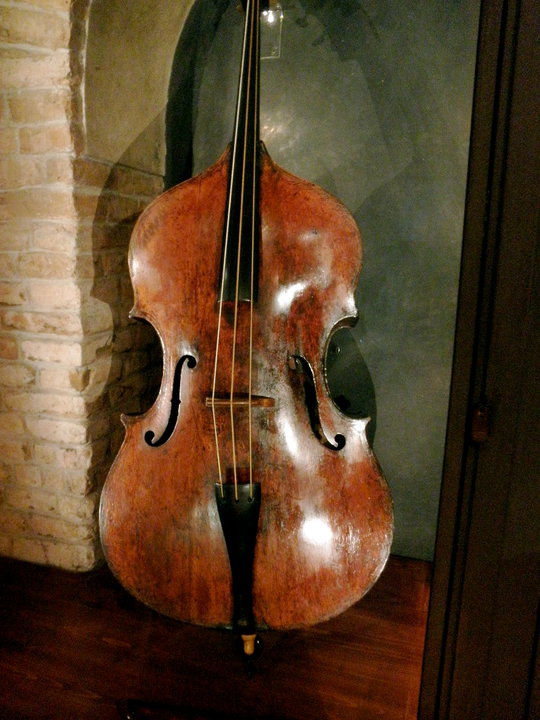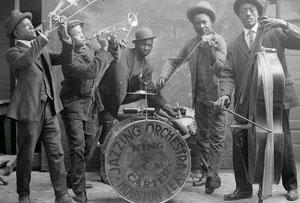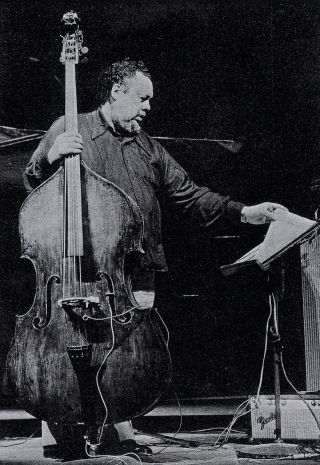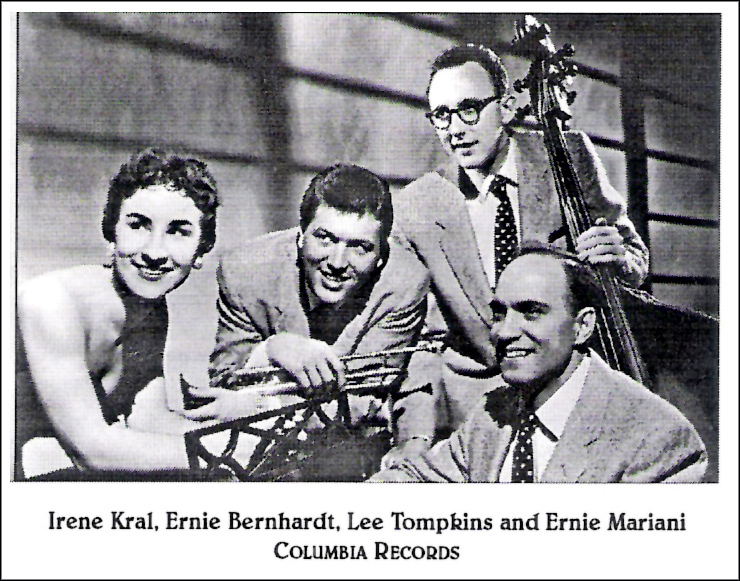The sound of jazz is the sound of the double bass. While jazzy rock and fusion have opted for bass guitars, most of jazz has remained loyal to the double bass. It’s what gives jazz its distinctive sound. Certainly vintage jazz is typified and captured in the double bass whether we are talking Dixieland, 20s jazz, swing, bop, cool jazz, hard bop, free jazz, third stream, avant-jazz or what have you.
Some might think that the earliest jazz bands and ensembles used tubas but the photographic evidence suggests otherwise. Double basses seem to have always been used. This presents us with an interesting insight into the formation of jazz: rather than descending from the horn ensemble or the string band, jazz descended from both in that there really was no jazz until the two traditions came together. Both horn and string bands played ragtime in the late 19th and early 20th centuries but only when both combined was the type of expression and musical vocabulary necessary for jazz available.

The Robichaux Orchestra of New Orleans was a proto-jazz band, a ragtime band on the verge of playing jazz. This photo is from 1896 or so. Some sources say it is from 1886 but that is highly unlikely as some of these men are seen in later photographs in the aughts and tens of the 20th century playing in true jazz bands but don’t look particularly older. One of these men is bassist Oak Gaspard. The fact that he would go on to play true jazz would indicate that what the Robichaux Orchestra played must not have been far from it.
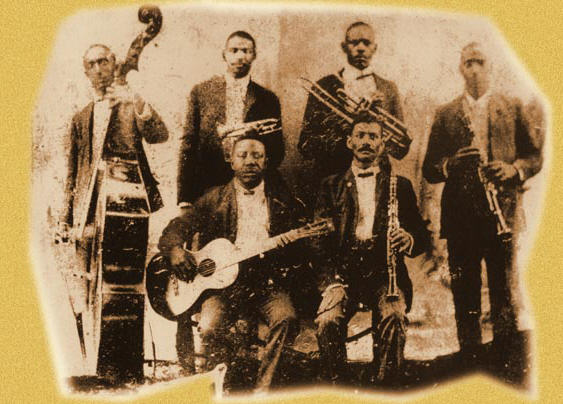
The first true jazz band is said to be the Buddy Bolden band. This photo was taken circa 1903. Bolden is holding the cornet. He was originally a blues player but he and trombonist Willie Cornish (standing next to Bolden) wanted to form a ragtime band. Cornish could read music but Bolden could not. Cornish tried to teach Bolden to play ragtime but Bolden was unable to rid himself of his blues roots and ended up with a unique hybrid of both styles that the band built itself around and jazz was born. Bolden was said to play so powerfully that he could be heard blowing from four miles away on a good night and often literally blew his cornets to pieces onstage. He was considered the greatest horn man of them all and so was often called King Bolden. This is the only known photo of him. The band also had a drummer but he was missed the shoot. Once again, we see a double bass instead of a tuba. The bassist, Jimmy Johnson, would go on to play in other jazz bands. Bolden appeared to have lost his mind in 1907 and was sent to an asylum where he spent the next 24 years, dying there in 1931. He never recorded.
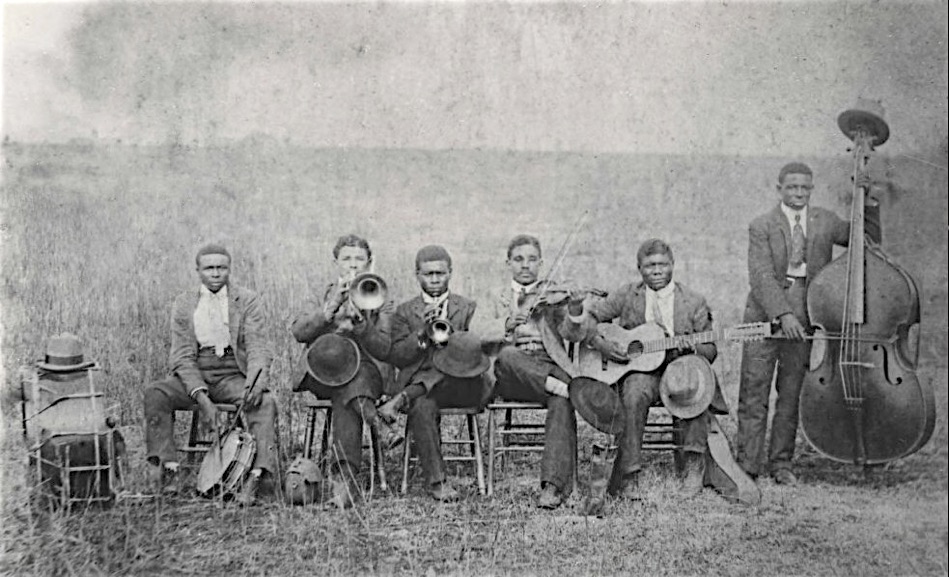
Another progenitor of jazz was trombonist Kid Ory of LaPlace, LA. He formed a ragtime band who all played homemade instruments. Ory made his own banjo, Stonewall Matthews made his own fiddle. The drummer actually played an inverted chair tapping the bottom and legs alternately. They were called Ory’s Woodland Band. They busked in the streets and threw their own picnics where all the attendees paid a small fee to dance, eat salad and sandwiches, some people brought their own beer and booze and the band would play all day long while everyone had a ball. They were so good that they soon had enough money to start buying real instruments. Since Ory was the bandleader, he got first dibs. Ory saw a trombone in a pawnshop and wanted it. He was able to buy it for $7.50 while the other band members had to wait a while but eventually all of them got real instruments. The bassist in the photo (taken circa 1905) is Foster Lewis. Notice again, instead getting a tuba man, they got a double bass. What’s interesting is that Lewis is holding a bow rather than playing with his fingers. Jazz bass was bowed most of the time in these early days of jazz (when it was spelled “jass”). Who started playing pizzicato and when is not really known. When Ory turned 21, he and his band lit out for New Orleans to crack the big time. All of them would go on to establish careers in jazz music. Ory is responsible for giving us Louis Armstrong. Louis was a kid who loved Ory’s band which contained the cornet phenom Joe “King” Oliver. Louis played blues but not jazz but Ory recognized his talent and put him under King’s wing and they quickly became like father and son. King Oliver taught Louis everything he knew about jazz. Needless to say, they were lessons well learned.
Some might think that the earliest jazz bands and ensembles used tubas but the photographic evidence suggests otherwise. Double basses seem to have always been used. This presents us with an interesting insight into the formation of jazz: rather than descending from the horn ensemble or the string band, jazz descended from both in that there really was no jazz until the two traditions came together. Both horn and string bands played ragtime in the late 19th and early 20th centuries but only when both combined was the type of expression and musical vocabulary necessary for jazz available.

The Robichaux Orchestra of New Orleans was a proto-jazz band, a ragtime band on the verge of playing jazz. This photo is from 1896 or so. Some sources say it is from 1886 but that is highly unlikely as some of these men are seen in later photographs in the aughts and tens of the 20th century playing in true jazz bands but don’t look particularly older. One of these men is bassist Oak Gaspard. The fact that he would go on to play true jazz would indicate that what the Robichaux Orchestra played must not have been far from it.

The first true jazz band is said to be the Buddy Bolden band. This photo was taken circa 1903. Bolden is holding the cornet. He was originally a blues player but he and trombonist Willie Cornish (standing next to Bolden) wanted to form a ragtime band. Cornish could read music but Bolden could not. Cornish tried to teach Bolden to play ragtime but Bolden was unable to rid himself of his blues roots and ended up with a unique hybrid of both styles that the band built itself around and jazz was born. Bolden was said to play so powerfully that he could be heard blowing from four miles away on a good night and often literally blew his cornets to pieces onstage. He was considered the greatest horn man of them all and so was often called King Bolden. This is the only known photo of him. The band also had a drummer but he was missed the shoot. Once again, we see a double bass instead of a tuba. The bassist, Jimmy Johnson, would go on to play in other jazz bands. Bolden appeared to have lost his mind in 1907 and was sent to an asylum where he spent the next 24 years, dying there in 1931. He never recorded.

Another progenitor of jazz was trombonist Kid Ory of LaPlace, LA. He formed a ragtime band who all played homemade instruments. Ory made his own banjo, Stonewall Matthews made his own fiddle. The drummer actually played an inverted chair tapping the bottom and legs alternately. They were called Ory’s Woodland Band. They busked in the streets and threw their own picnics where all the attendees paid a small fee to dance, eat salad and sandwiches, some people brought their own beer and booze and the band would play all day long while everyone had a ball. They were so good that they soon had enough money to start buying real instruments. Since Ory was the bandleader, he got first dibs. Ory saw a trombone in a pawnshop and wanted it. He was able to buy it for $7.50 while the other band members had to wait a while but eventually all of them got real instruments. The bassist in the photo (taken circa 1905) is Foster Lewis. Notice again, instead getting a tuba man, they got a double bass. What’s interesting is that Lewis is holding a bow rather than playing with his fingers. Jazz bass was bowed most of the time in these early days of jazz (when it was spelled “jass”). Who started playing pizzicato and when is not really known. When Ory turned 21, he and his band lit out for New Orleans to crack the big time. All of them would go on to establish careers in jazz music. Ory is responsible for giving us Louis Armstrong. Louis was a kid who loved Ory’s band which contained the cornet phenom Joe “King” Oliver. Louis played blues but not jazz but Ory recognized his talent and put him under King’s wing and they quickly became like father and son. King Oliver taught Louis everything he knew about jazz. Needless to say, they were lessons well learned.



